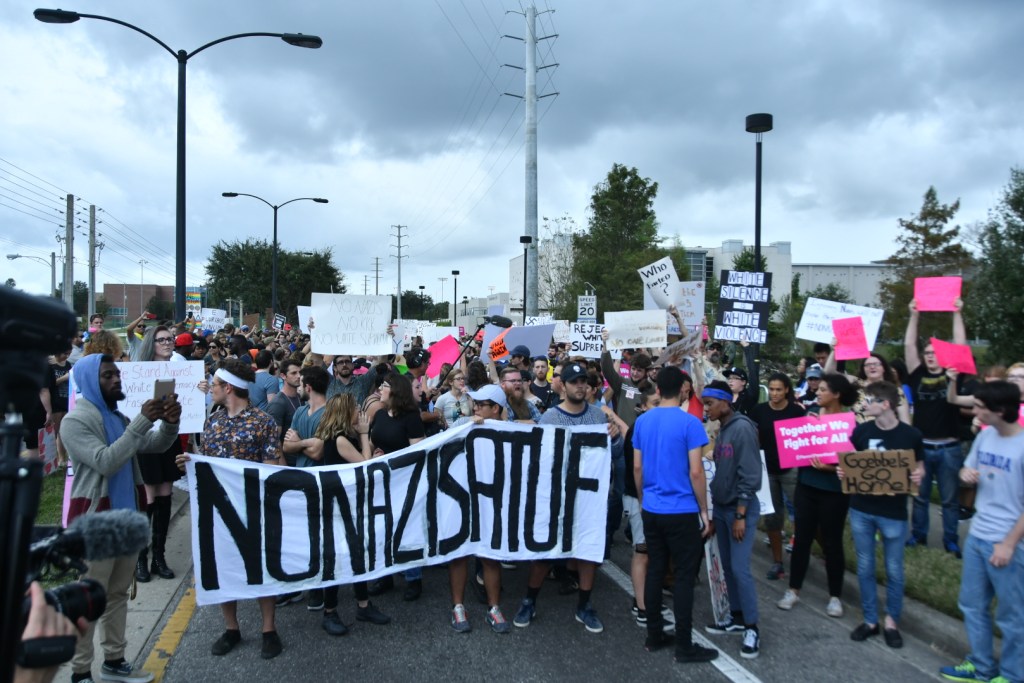Strategic Communication

Crisis Communications in Institutions of Higher Education: Richard Spencer at UF
As with any private organization, institutions of higher education are susceptible to controversial scenarios requiring evolving crisis communications plans and strategies. One increasingly critical element in crisis communications is the optimization of multi-platform communication channels, particularly social media.
To better understand how a university used social media during a turbulent episode, University of Florida College of Journalism and Communications graduate students Patrick Thelen and Katy Robinson evaluated UF President Kent Fuchs’ use of Facebook and Twitter in the lead up to, during, and after the visit of Richard Spencer, head of the National Policy Institute (NPI), a White supremacist think tank. Where Spencer goes, violence has a way of following. UF initially turned down Spencer’s request to speak on the UF campus, but, to avoid a First Amendment fight, relented and allowed Spencer to speak on Oct. 19, 2017.
At the time of the study, the UF President’s Facebook page had more than 9,000 followers and his Twitter account had over 22,000 followers. Through a content analysis of posts and the application of situational crisis theory, the researchers analyzed the President’s handling of Spencer’s speaking on campus before, during and after the event.
The authors examined seven Facebook posts and 52 Twitter posts to better understand the public’s cognitive, emotional, and behavioral engagement with Fuchs. Between Aug. 12 and Oct. 20, 2017, the Facebook posts regarding Spencer’s visit received 1,817 comments while his Twitter posts saw 1,042 comments.
The study’s findings indicate that the President took great care in crafting his messages, understanding the sensitive nature of Spencer’s visit. Each post varied in content and tone depending on whether it occurred prior to, during, or following the visit.
Most of the social media posts were intended to help constituents psychologically cope with all that Spencer’s arrival would bring and the aftermath of his visit. The messaging was rational instead of emotional and focused primarily on public reaction.
While the initial priority, according to the study, was to inform the public regarding safety precautions and advocating for peaceful protest, the posts predominantly attempted to calm the community’s anxiety regarding what Spencer’s presence symbolized. Then, reputation management came into play, especially once Spencer had left. The President presented the school as a victim complying with the law.
The researchers concluded that the President handled scrutiny regarding Spencer’s visit using social media positively, being able to diffuse the potential for violence while attending to the community’s worries. Posts were rational and appealed to the cognitive nature of social media users avoiding emotional flareups and further antagonism.
Higher education leaders facing similar circumstances can take note of the example set by President Fuchs and his use of social media within a crisis communications scenario. The study suggests that leaders that can present themselves as humane and authentic when addressing controversial matters. In addition, the research indicates that stakeholders respond more favorably to positive sentiment, messaging, and collective pride.
“Crisis Communications in Institutions of Higher Education: Richard Spencer at the University of Florida” appeared in Communication Quarterly, published online on May 24, 2019.
This summary was written by Dr. Dana Hackley.
Posted: June 18, 2019


